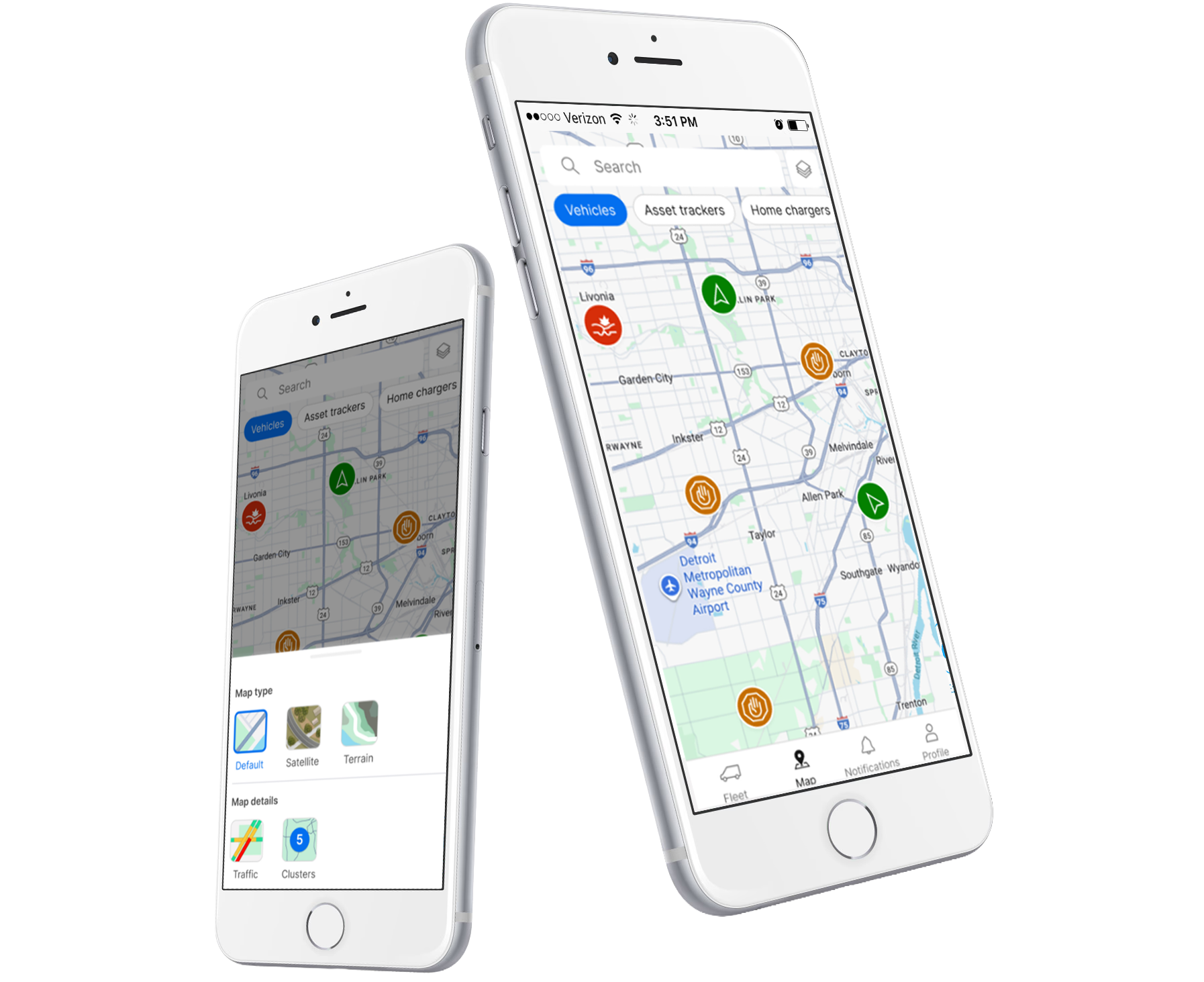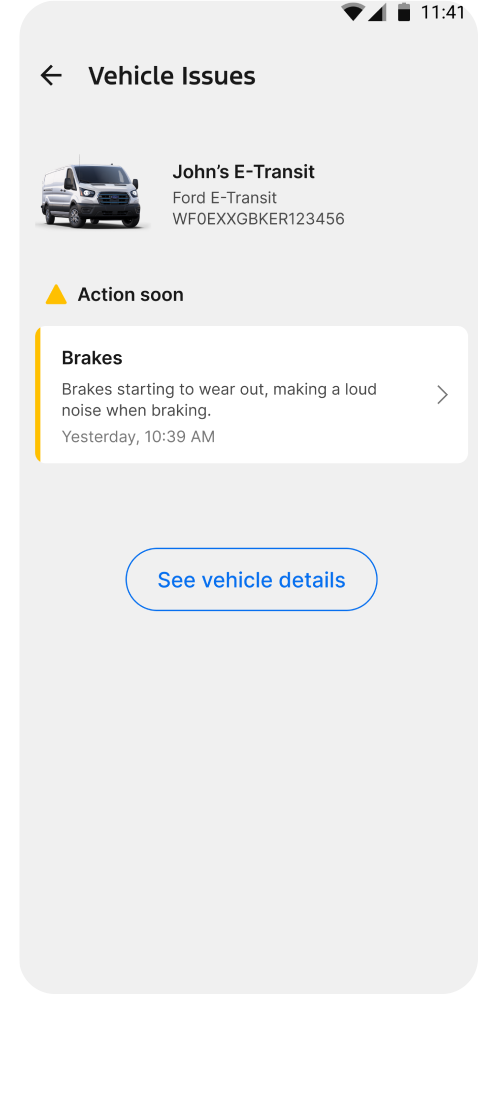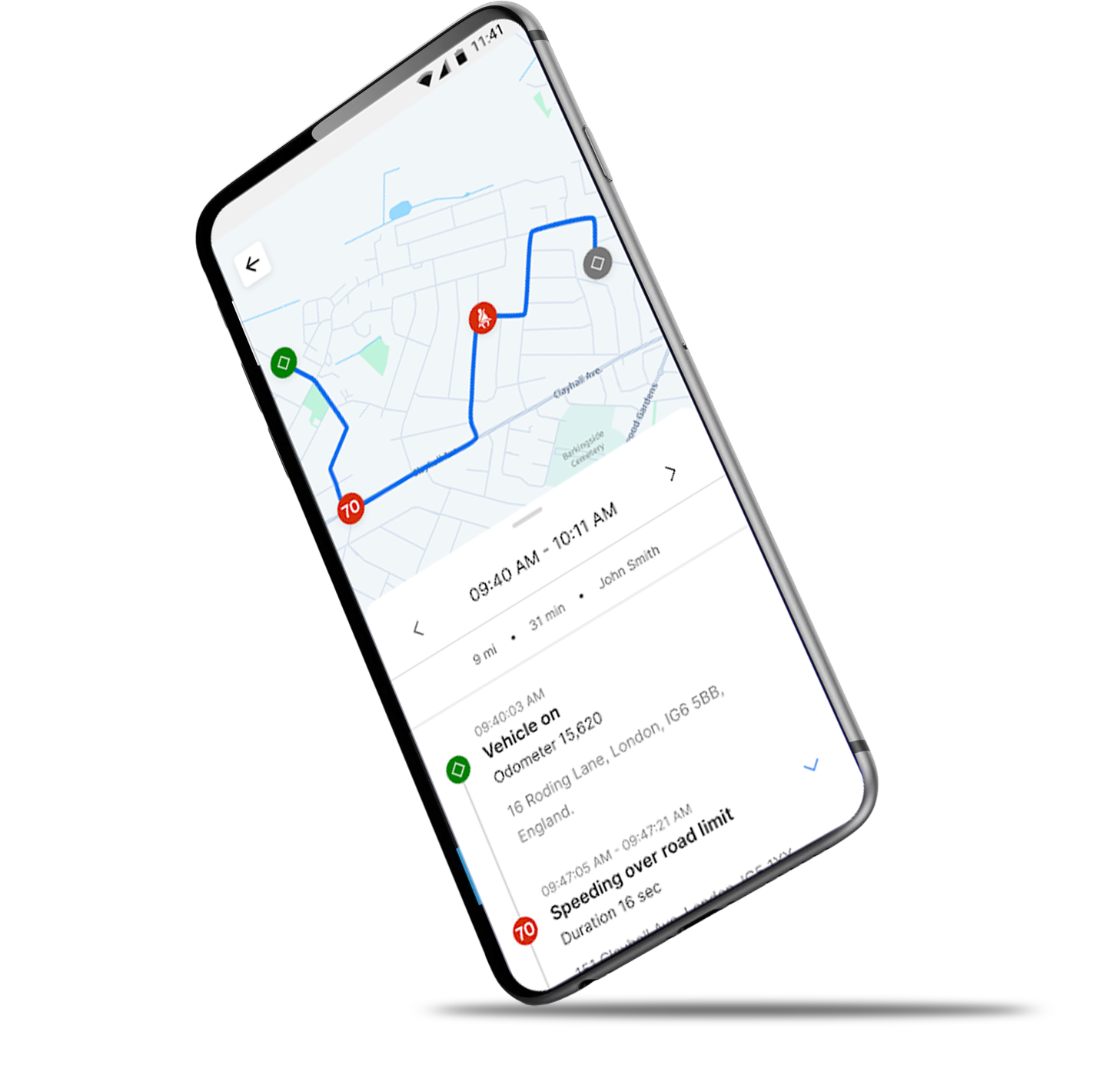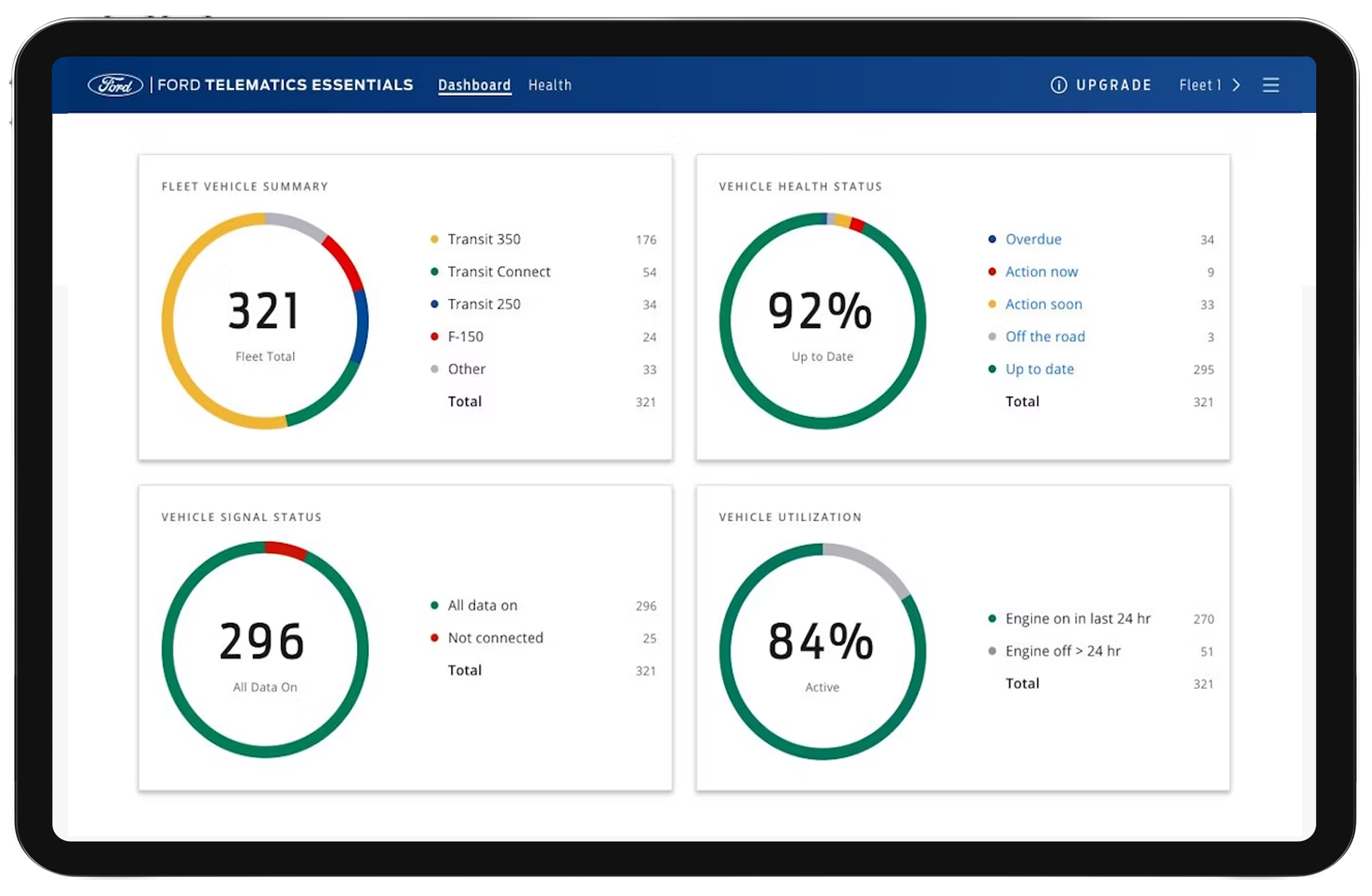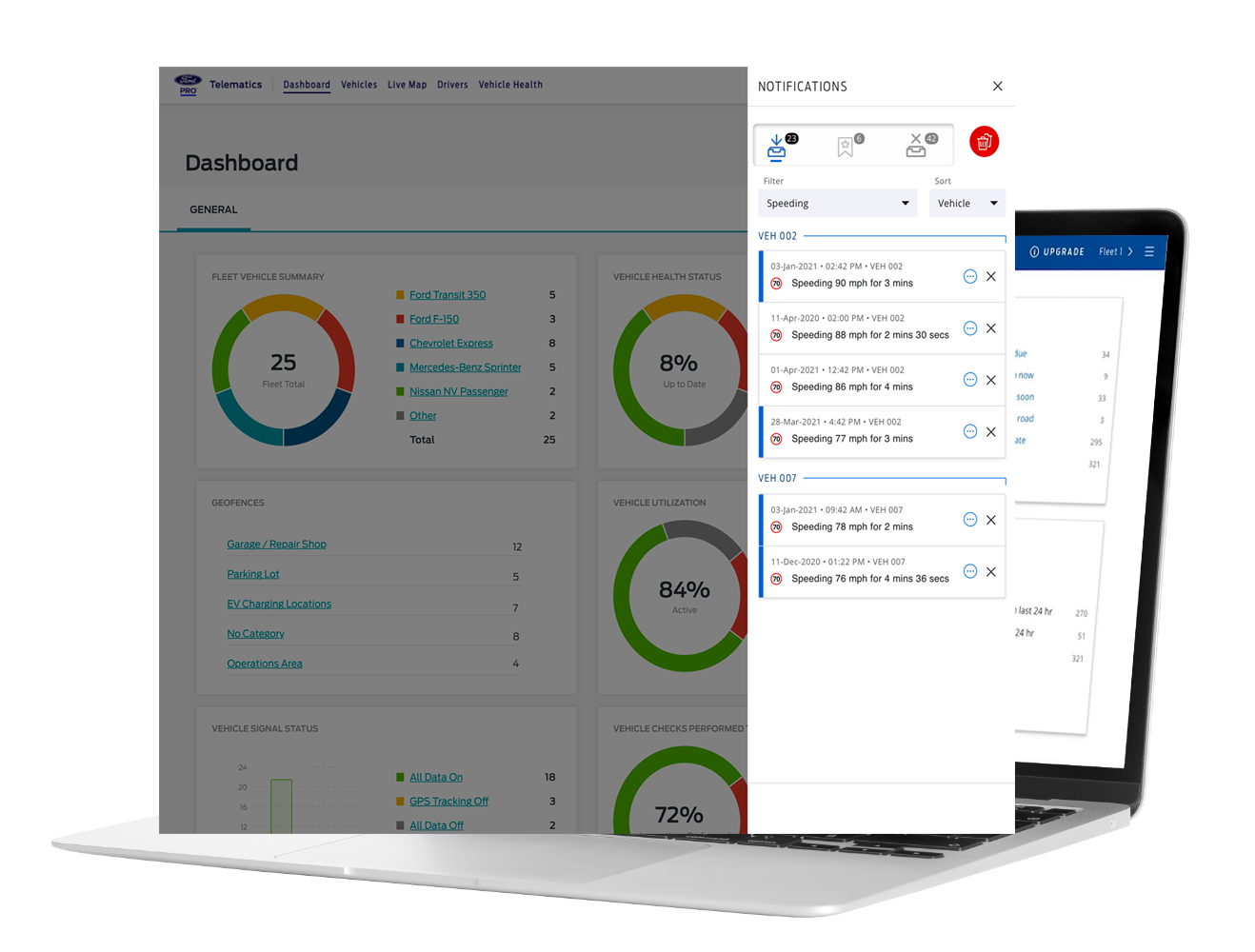Ford Pro Telematics
Enterprise Redesign at Scale
Overview
Ford Pro Telematics is the intelligence layer powering commercial fleet operations—from vehicle health and efficiency to diagnostics, driver behavior, and route optimization. Fleet managers were struggling with fragmented tools, inconsistent workflows, and a high cognitive load when navigating large volumes of vehicle and driver data.
As Design Manager, I led the end-to-end experience strategy and cross-functional alignment across UX, Product, and Engineering to simplify the telematics workflow, and deliver an intuitive platform that gives fleet managers control, clarity, and confidence in their daily operations.
The Challenge
Fleet managers—ranging from small business owners to national logistics leaders—needed clearer, faster ways to answer mission-critical questions:
Are my vehicles healthy and available today?
Which drivers need attention?
What requires action right now?
What’s costing us the most time or money?
The existing telematics interface suffered from:
Disconnected workflows across health, diagnostics, location, and driver behavior
Overwhelming data tables with no hierarchy or prioritization
Alerts and insights buried across pages
A lack of mobile-friendly patterns for field technicians
Long onboarding curves for new fleet managers
We needed to transform the platform into a unified, insight-led system that could scale with Ford’s growing commercial ecosystem.
My Role
As Design Manager, I:
Set the UX vision and experience strategy across Telematics, Connected Vehicle, and Fleet workflows
Directed 40+ designers, 10 front end deelopers and researchers through concepting, prototyping, and delivery across multiple releases
Aligned Product and Engineering around a unified roadmap and design system standards
Established design rituals (weekly critiques, design reviews, cross-functional workshops)
Coached designers on interaction design, systems thinking, and storytelling
Championed a data-driven, user-centered design approach, partnering closely with research and analytics
Research & Insights
We conducted field research with fleets across:
Utilities (repair & service trucks)
Construction (mixed-vehicle fleets)
Government (city maintenance, police service fleets)
Last-mile delivery
Key insights:
1. Fleet managers were drowning in data, not insight.
They needed prioritization—not endless diagnostic tables.
2. Daily workflows were fragmented across tools.
Vehicle status, driver behavior, maintenance planning, and routing didn’t talk to each other.
3. Mobile was essential but underserved.
Field managers needed quick, actionable views—not full desktop interfaces.
4. Decisions required context, not just alerts.
An alert without severity, cost impact, or recommended action was ignored.
5. Fleet teams operated with “mental checklists.”
We needed to embed these mental models into the product interface.
These insights shaped our design principles.
Design Principles We Defined
Insight → Action
Lead with the “why” and “what to do next.”Clarity at Scale
Organize high-density data through hierarchy, grouping, and progressive disclosure.Mobile First for Field Operations
Prioritize brevity, touch patterns, and contextual entry points.System Thinking
Ensure consistency across Ford Pro apps through shared components and patterns.Adapt to Fleet Complexity
From 5 vehicles to 5,000 vehicles—same clarity, different scale.
Track your fleet on live map
Fleet health overview
Control vehicles remotely
View Trip History
Get insights into vehicle health
Get notifications about your fleet
Solution
We delivered a unified, insight-led telematics platform centered around three core modules:
A. Vehicle Health Hub
A consolidated view of:
Issues by severity (Critical, Major, Minor)
Vehicle availability
Maintenance forecasting
Diagnostic trouble codes with plain-language descriptions
Impact: Managers immediately knew which vehicles could operate today—and which couldn’t.
B. Driver Behavior & Safety Dashboard
Surface-level patterns highlighting:
Harsh braking
Idling patterns
GPS-based route events
Speeding risk zones
Design decision: Pair quantitative data with contextual explanations to help managers coach drivers—not punish them.
C. Live Map + Operational Layer
Map-based command center with:
Live vehicle locations
Filters by assignment, status, or vehicle type
Alerts layered onto the map (breakdowns, diagnostics, late routes)
One-tap access to driver or vehicle profiles
Mobile-first enhancements: Quick actions (Call driver, Navigate, Assign task)
D. Unified Alerts Experience
Built a cross-platform alerting framework:
Normalized severity levels
Clear recommended actions
Support for mobile push + in-platform notifications
Transparent rules for when alerts trigger
E. Design System & Interaction Frameworks
As part of Ford’s digital ecosystem, we:
Contributed new components to Ford’s enterprise design system (tables, cards, severity tags, health ladders)
Defined interaction patterns for maps, alerts, dashboards, and hierarchical data
Ensured WCAG accessibility across all surfaces
Published guidelines for product consistency across other Ford Pro apps
F. Collaboration & Leadership
Cross-Functional Alignment
I led workshops to unify PM, Engineering, Data Science, and CX around:
Workflow models
Prioritization frameworks
System architecture
Release-level UX requirements
Team Leadership
I mentored designers on:
Effective storytelling with data
High-fidelity prototyping
Designing for enterprise scalability
Balancing craft excellence with delivery pressure
Results & Outcomes
Within the first release cycle:
Reduction in time to diagnose vehicle issues
Managers could identify problems in seconds rather than minutes.
Increase in alert acknowledgment
Improved clarity and actionability drove engagement.
Higher adoption of mobile workflows
Field managers now used mobile first for daily operations.
Stronger cross-product consistency
Shared patterns accelerated design and development velocity.
Clearer business impact
Fleet downtime reduced, operational clarity improved, and teams were more proactive vs. reactive.
Reflection
This project reinforced the importance of designing for clarity, confidence, and connection between people and their tools—especially in operational environments where downtime has real-world consequences.
As Design Manager, my biggest contribution wasn’t just the final UI.
It was:
Setting a clear UX strategy
Aligning cross-functional teams
Building a strong operational cadence
Championing customer empathy
Elevating the team’s craft and confidence
The result was a telematics platform that feels not just functional—but empowering.


